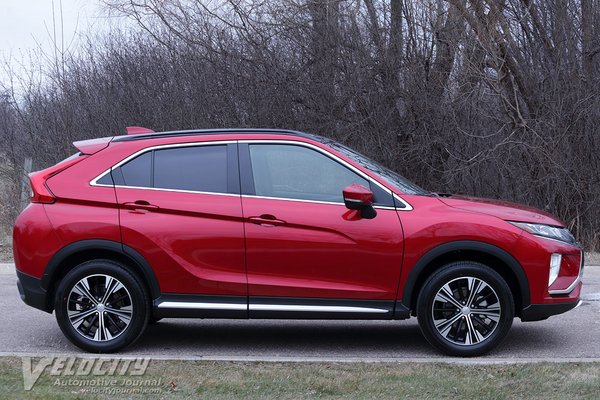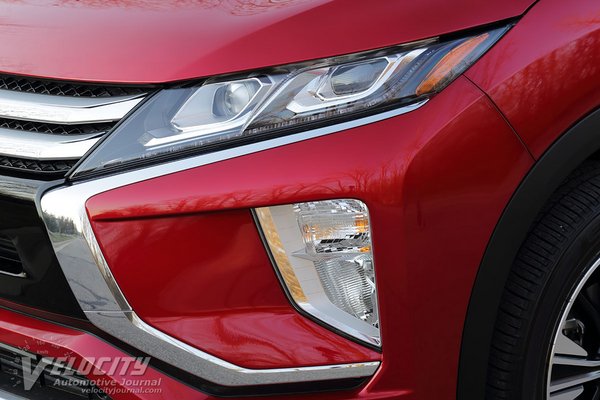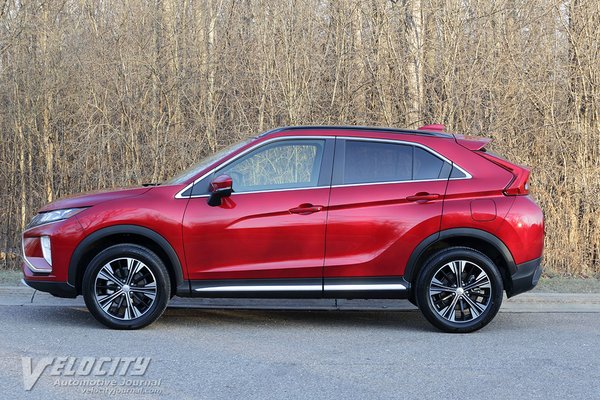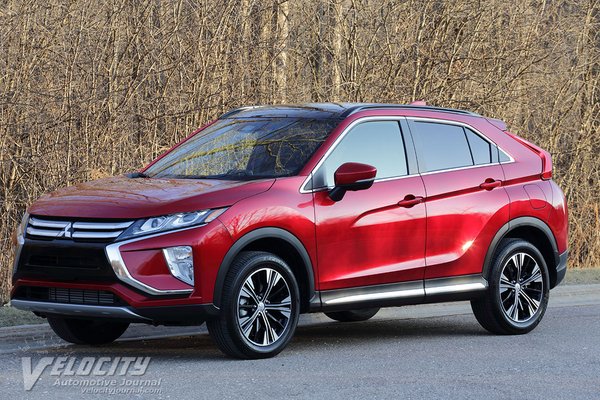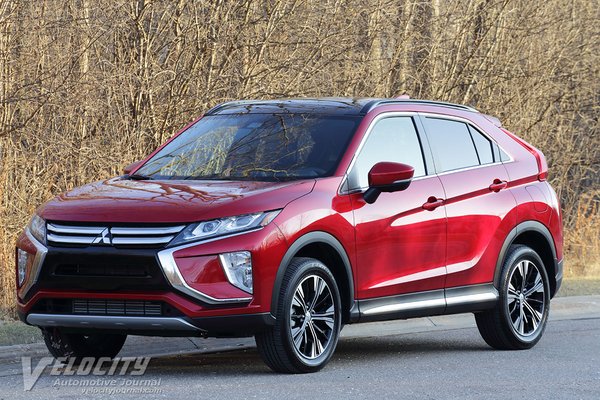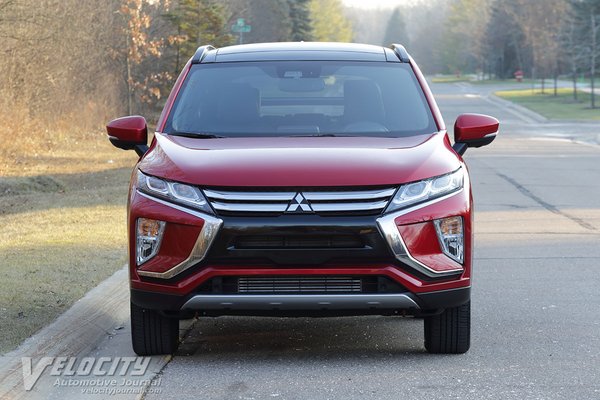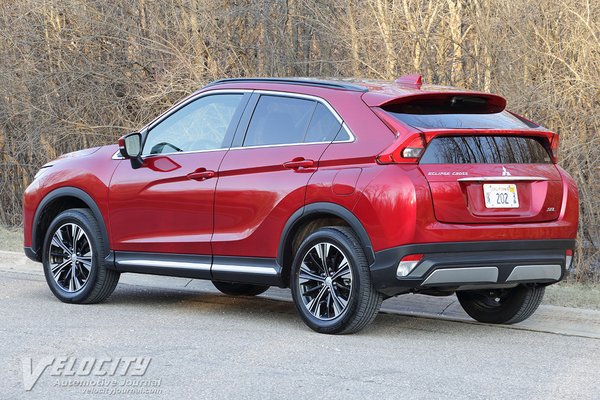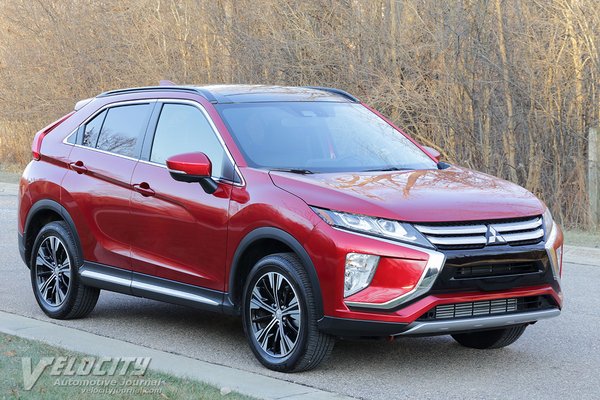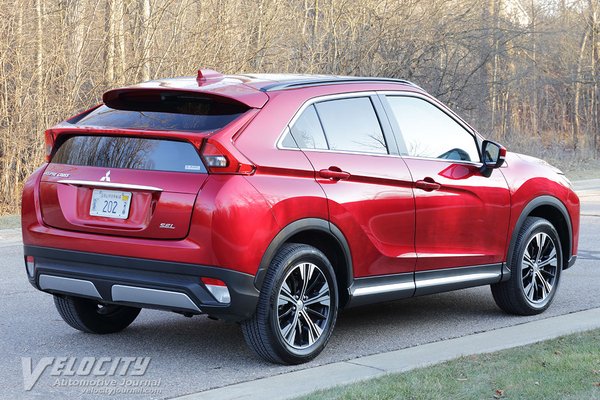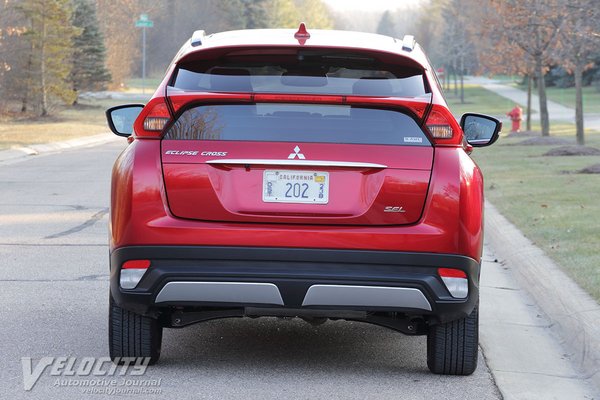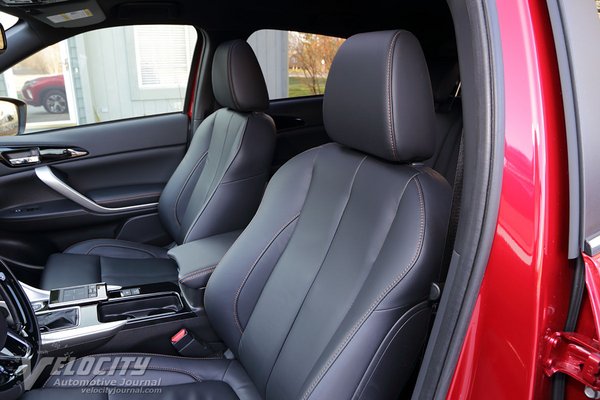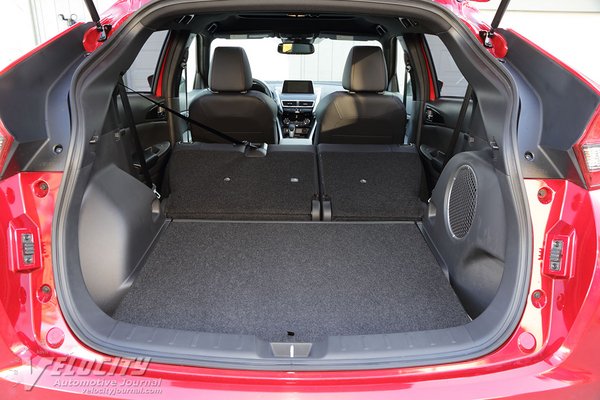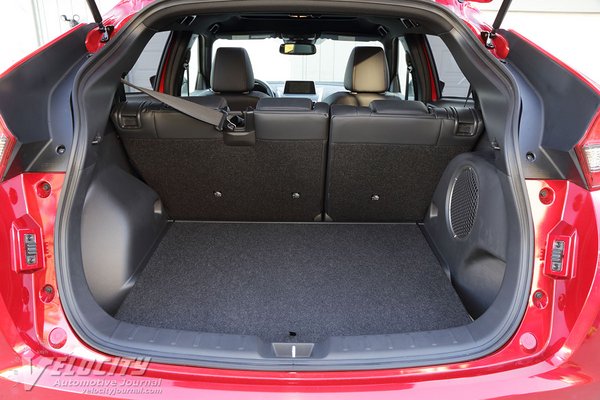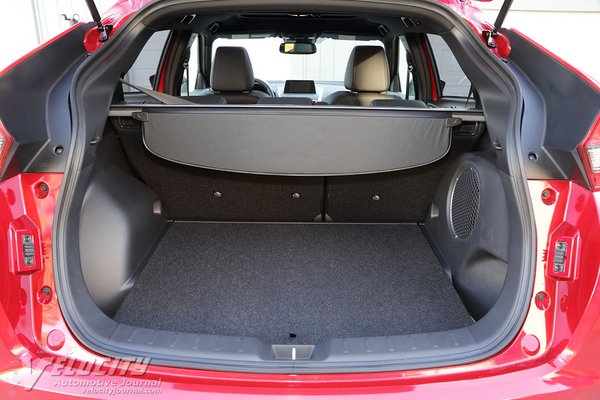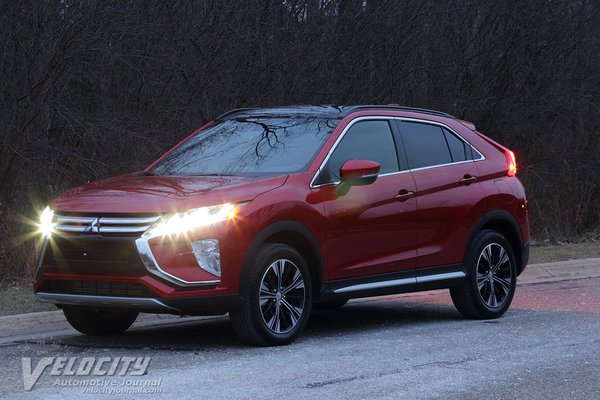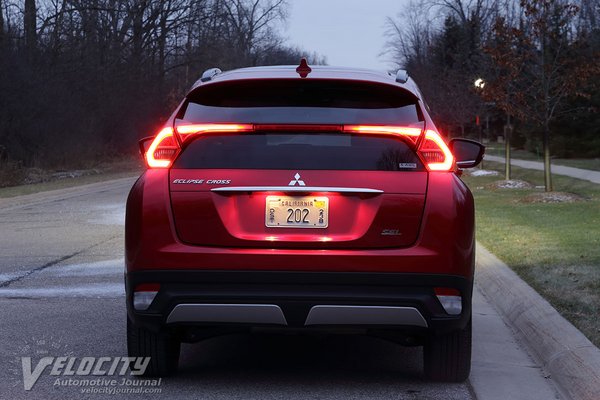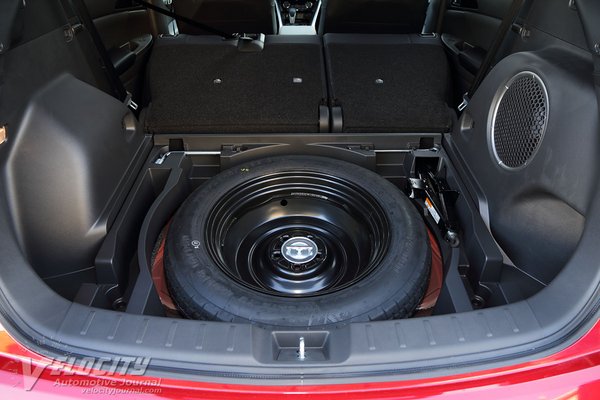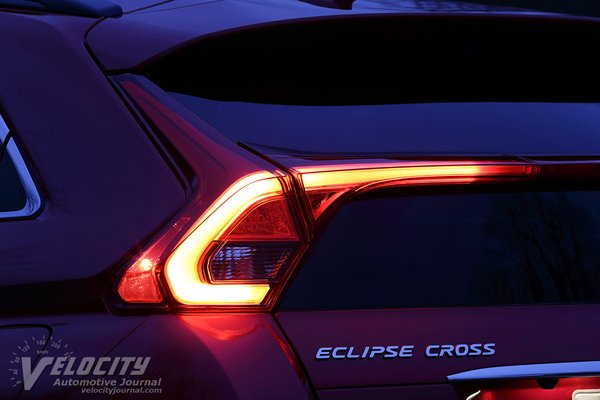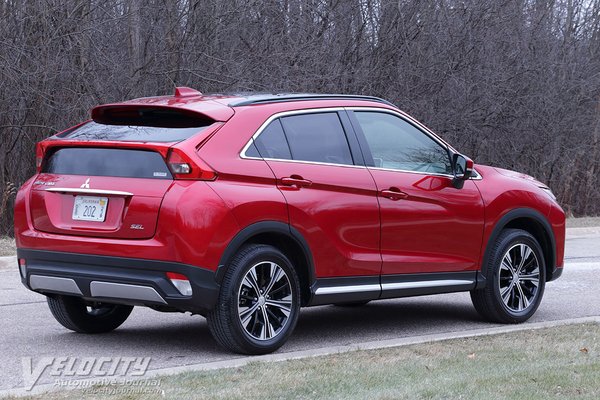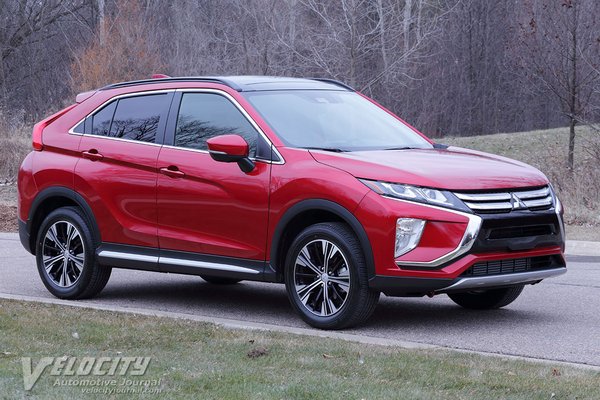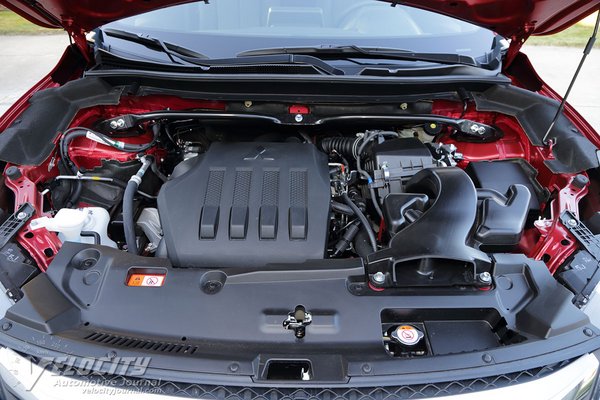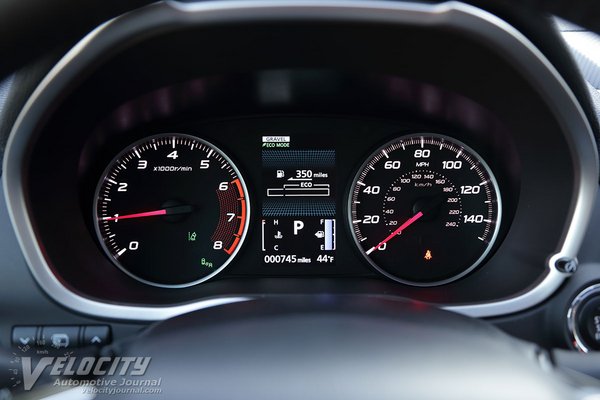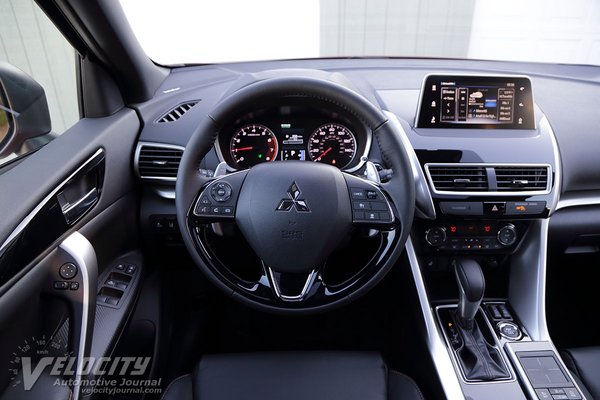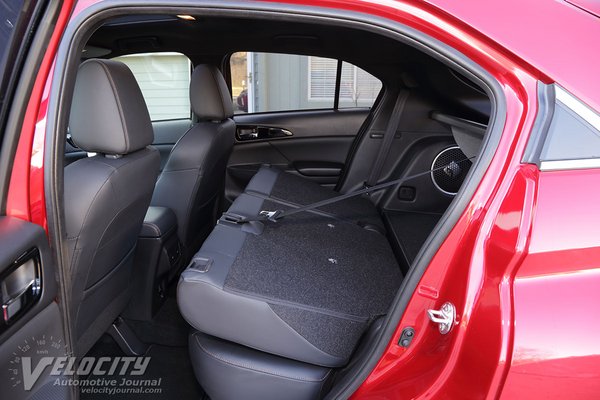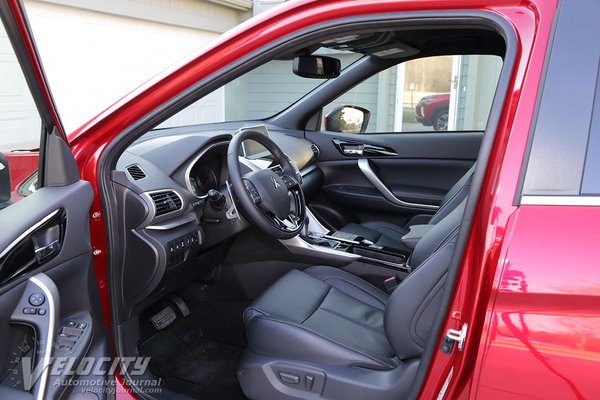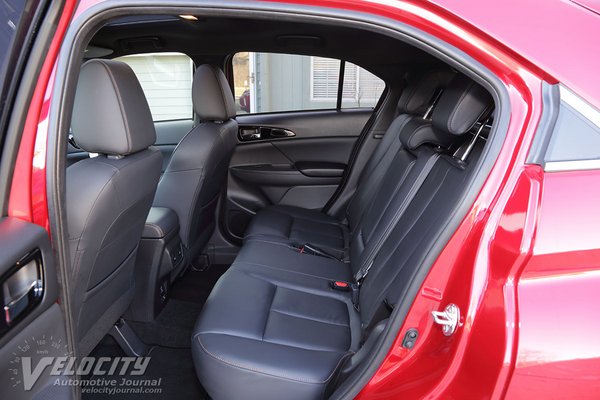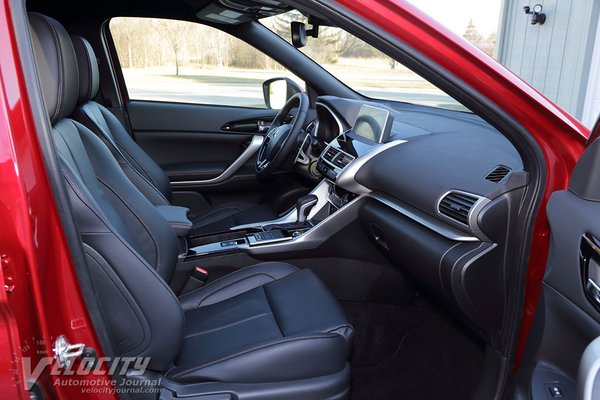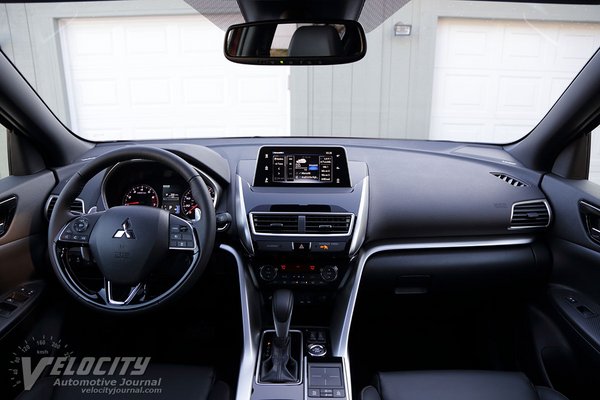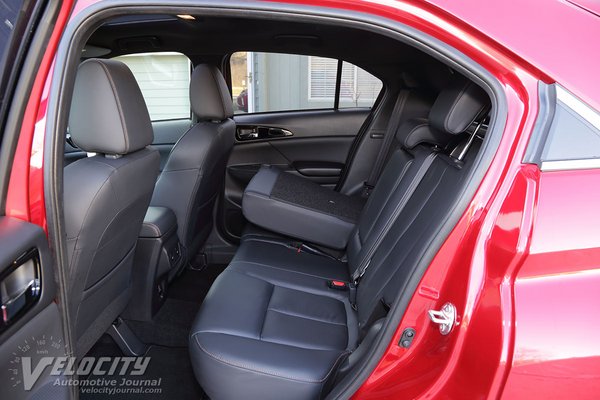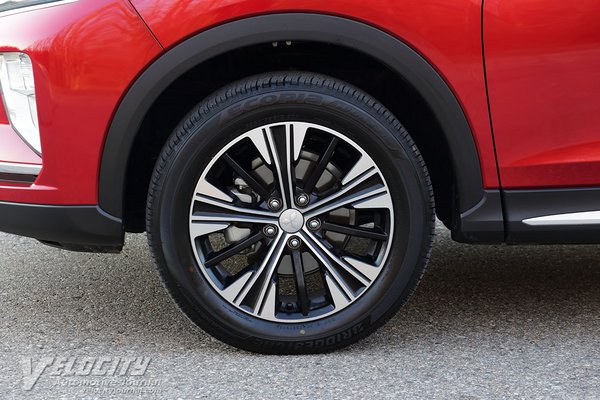2020 Mitsubishi Eclipse Cross SEL
04/02/2020
Shahed Hussain
Mitsubishi has consolidated its product line to subcompact cars and a range of SUVs. The new Eclipse Cross is the latest addition to the SUV lineup, fitting above the compact Outlander Sport and the midsize Outlander. In this crowded segment, the Eclipse Cross competes with entries from all the domestic and Asian mass market brands.
Eclipse Cross models range from the base ES ($22,995) to the SEL ($28,745). In between are the LE ($24,095) and SE ($25,645). A 1.5L turbo inline-4 coupled to a CVT drives the front, or all four wheels via Mitsubishi's S-AWC all-wheel drive system. We tested the top all-wheel drive SEL model ($28,745). Options included Red Diamond paint ($595), Touring Package ($2,100), roof spoiler ($465), carpeted floor mats ($145), tonneau cover ($190). Adding on the $1,195 destination fee totaled up to $33,435. Significant equipment includes LED headlights, fog lights, power folding side mirrors, 7-in. touchscreen display, head-up display, multi-view camera system, panoramic sunroof, leather seats, 8-way power front driver's seat, heated front and rear seats, heated steering wheel, and a Rockford Fosgate audio system. Both Android Auto and Apple CarPlay compatibility are standard. Safety technologies include ABS, adaptive cruise control, forward collision mitigation, pedestrian detection, blind sport warning, lane change assist, lane departure warning, rear cross traffic alert, and stability control.
Mitsubishi's new 1.5L inline-4 marks the return of a turbocharged engine to its US model range. The 4B40-TC all-aluminum powerplant is topped by a dual overhead cam head with MIVEC variable valve-timing and direct fuel-injection. The result is 152-hp @ 5,500 RPM and 184 lb.-ft. between 2,000-3,500 RPM. Mitsubishi's S-AWC (Super All Wheel Control) 4WD represents the integration of stability control, ABS, and active yaw control systems. Three drive modes are selectable: Auto, Snow and Gravel. The CVT (Continuously Variable Transmission) ratios span 2.631-0.378:1 coupled to a 6.386:1 final drive. Mitsubishi engineers programmed the CVT to simulate an 8-speed stepped-ratio automatic. Interestingly, the eighth ratio (0.404:1) is slightly higher than the CVT lowest ratio (0.378:1), so Mitsubishi is not using the full ratio span of the CVT. Fuel consumption is rated at 25/26 MPG (city/hwy.). We averaged 24-25 MPG in mixed highway and urban driving.
Both the Eclipse Cross and the smaller Outlander Sport share the same 105.1 in wheelbase, but the Eclipse Cross is 1.5 in. longer (173.4 in.), 0.2 in. narrower (71.1 in.), and 1.5 in. taller (66.3 in.). The Eclipse Cross uses the typical MacPherson struts and stabilizer bar in front; at the rear is a multi-link setup with coil springs, dampers and stabilizer bar. The rack-and-pinion steering is motor-assisted with 2.9 turns lock-to-lock. Brakes are all-disc: 11.6 in. dia. front and 11.9 in. dia. rear rotors. Most Eclipse Cross models are equipped with Bridgestone Ecopia P225/55R18 all-season tires mounted on 18-in. dia. alloy wheels. The base ES gets smaller 16-in. dia. alloy wheels with narrower P215-70R16 Falken tires. Curb weight ranges from 3,285 lbs. (ES 2WD) to 3,516 lbs. (SEL 4WD).
Mitsubishi interior design is conservative, yet attractive. Glossy piano black and matte silver trim contrasts against the predominantly dark gray hues of the seats and interior panels. Interior materials and build quality are comparable to other mainstream SUVs. The leather-wrapped steering wheel has integrated buttons and switches for audio, phone, and cruise control. Dual paddles behind the steering wheel enable fingertip CVT shifts on demand. Within the gauge cluster are an analog speedometer and tachometer. The center multifunction display contains digital bar gauges for coolant temperature and fuel level. A tablet-style 7-in. infotainment touchscreen on the dash displays audio information. Customers are expected to substitute Android Auto or Apple CarPlay in place of an integrated navigation system. Parking maneuvers are aided by the synthesized overhead camera view on the infotainment display. The dual-zone climate control panel is inconveniently set back under the center vents. Next to the CVT shift lever are front seat heater rocker switches, and the S-AWC mode button for the 4WD system. A touchpad on the center console conveniently accesses infotainment functions on the dash display. Two USB ports are located on the center stack, along with a 12V power port in center console bin.
Only the SEL is fitted with supportive leather seats; red stitching adds subtle color contrast. Having 8-way power adjustments enabled us to find a comfortable position in the driver's seat. The front passenger must make do with manual 4-way seat adjustments, a disappointing miss for the best equipped model in the lineup. Front headroom is acceptable for occupants up to 5'-10" tall along with decent legroom. Rear passengers have similar headroom, but the seatback does recline to accommodate taller occupants. Although legroom is generous, the center rear position is only tolerable for short trips due to the stiff seatback.
Despite its name, the Eclipse Cross is no replacement for Mitsubishi's long departed sport coupe. Any expectations of sporty handling disappear within the first few minutes on the road. Mitsubishi's chassis engineers prioritized a comfort-oriented ride that soaks up bumpy surfaces, but we found that soft spring and damper settings resulted in a chassis that felt loose and underdamped. Unsurprisingly, the suspension exhibits moderate body roll and understeer, as is typical among compact SUVs. Steering suffers from excessive power assist and minimal feedback from road surfaces, although the slow ratio assures reasonable tracking at highway speeds. The all-disc brakes deliver decent stopping power, with progressive actuation but slightly spongy pedal feel.
The new 1.5L turbo is tuned for midrange torque, so throttle response is adequate in urban driving, but not especially energetic. The turbo spools up quickly, nearly equaling the torque output of a larger displacement normally-aspirated inline-4. On the highway, the turbo four provides acceptable acceleration when lightly loaded, but the available 152-hp is significantly below that of powerplants in other compact SUVs. The substantial curb weight of the SEL contributes to its merely adequate acceleration. Although Mitsubishi programmed the CVT to simulate an 8-speed automatic, the transmission still drones at full throttle from 2000-3,000 RPM. Shift calibration is biased toward fuel efficiency, so the CVT minimizes engine RPM whenever possible. We typically used the Sport mode in urban driving for faster acceleration and throttle response.
Mitsubishi's strategy to expand its SUV lineup with the Eclipse Cross seems sensible, since this market is still expanding in the US. The Eclipse Cross is wedged between the subcompact Outlander Sport and the midsize Outlander. Comparing prices reveals that the Eclipse Cross SEL costs nearly as much as the midsize Outlander LE, so we expect that customers will prefer the larger Outlander for about the same money. At a lower price point, the Eclipse Cross LE and SE are a better value. The real issue is that with so many compact SUVs available at this price point, the Eclipse Cross faces some tough competition from other Asian and domestic brands.

